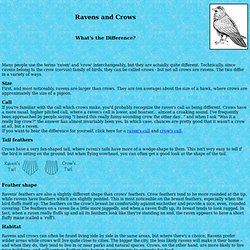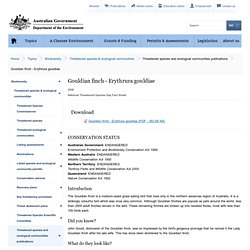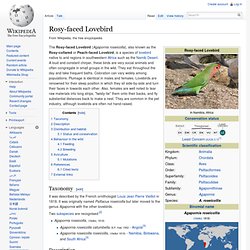

GOLDEN COB : Bird Profiles : Red-rumped Parrot. How to Feed a Red Rumped Parakeet. Red Rumped Parrot (Psephotus Haematonotus) Australian Raven (Corvus coronoides) - Birds in Backyards Fact sheet. TheRaven's Aviary - Crow vs. Raven. What's the Difference?

Many people use the terms 'raven' and 'crow' interchangeably, but they are actually quite different. Technically, since ravens belong to the crow (corvus) family of birds, they can be called crows - but not all crows are ravens. The two differ in a variety of ways. Size First, and most noticeably, ravens are larger than crows. They are (on average) about the size of a hawk, where crows are approximately the size of a pigeon. Call If you're familiar with the call which crows make, you'd probably recognize the raven's call as being different. Tail feathers Crows have a very fan-shaped tail, where raven's tails have more of a wedge-shape to them. Feather shape Ravens' feathers are also a slightly different shape than crows' feathers.
Habitat Ravens and crows can often be found living side by side in the same areas, but where there's a choice, Ravens prefer wilder areas while crows will live quite close to cities. Pheasant Coucal - Australian Birds - photographs by Graeme Chapman. Pheasant coucal. Gouldian Finch (Erythrura gouldiae) - Birds in Backyards Fact sheet. National Threatened Species Day - Gouldian finch - Erythrura gouldiae - fact sheet. Australian Government: ENDANGERED Environment Protection and Biodiversity Conservation Act 1999Western Australia: ENDANGEREDWildlife Conservation Act 1950Northern Territory: ENDANGEREDTerritory Parks and Wildlife Conservation Act 2000Queensland: ENDANGEREDNature Conservation Act 1992 Introduction The Gouldian finch is a medium-sized grass eating bird that lives only in the northern savannas region of Australia.

It is a strikingly colourful bird which was once very common. Although Gouldian finches are popular as pets around the world, less than 2500 adult finches remain in the wild. These remaining finches are broken up into isolated flocks, most with less than 100 birds each. Did you know? John Gould, discoverer of the Gouldian finch, was so impressed by the bird's gorgeous plumage that he named it the Lady Gouldian finch after his late wife. What do they look like? The Gouldian finch is easily recognised by its purple chest, yellow breast and green back. Where do they live? What you can do. Rosy-faced Lovebird. The Rosy-faced Lovebird (Agapornis roseicollis), also known as the Rosy-collared or Peach-faced Lovebird, is a species of lovebird native to arid regions in southwestern Africa such as the Namib Desert.

A loud and constant chirper, these birds are very social animals and often congregate in small groups in the wild. They eat throughout the day and take frequent baths. Coloration can vary widely among populations. Plumage is identical in males and females. Lovebirds are renowned for their sleep position in which they sit side-by-side and turn their faces in towards each other. Taxonomy[edit] It was described by the French ornithologist Louis Jean Pierre Vieillot in 1818.
Two subspecies are recognised:[2] Agapornis roseicollis, (Vieillot, 1818) Agapornis roseicollis catumbella, B.P. Gouldian finch. Superb Fairy-wren (Malurus cyaneus) - Birds in Backyards Fact sheet. Willie Wagtail (Rhipidura leucophrys) - Birds in Backyards Fact sheet. Variegated Fairy-wren (Malurus lamberti) - Birds in Backyards Fact sheet.